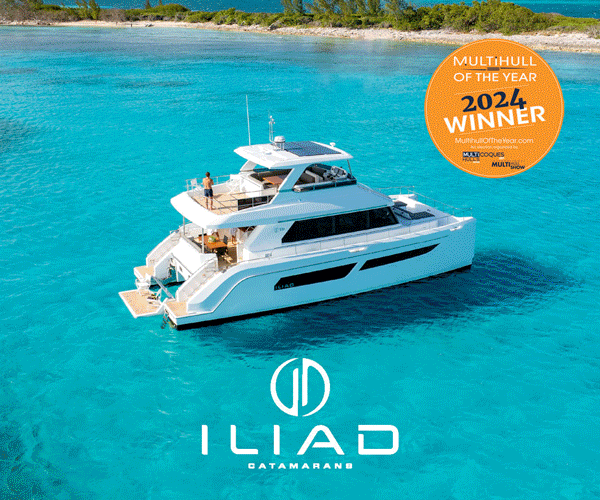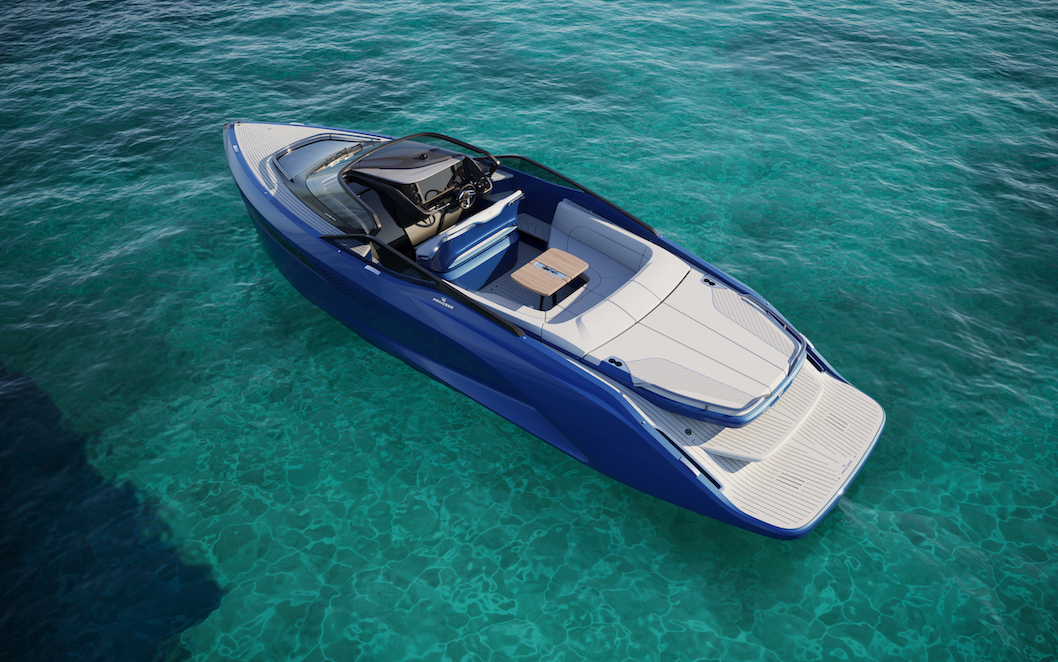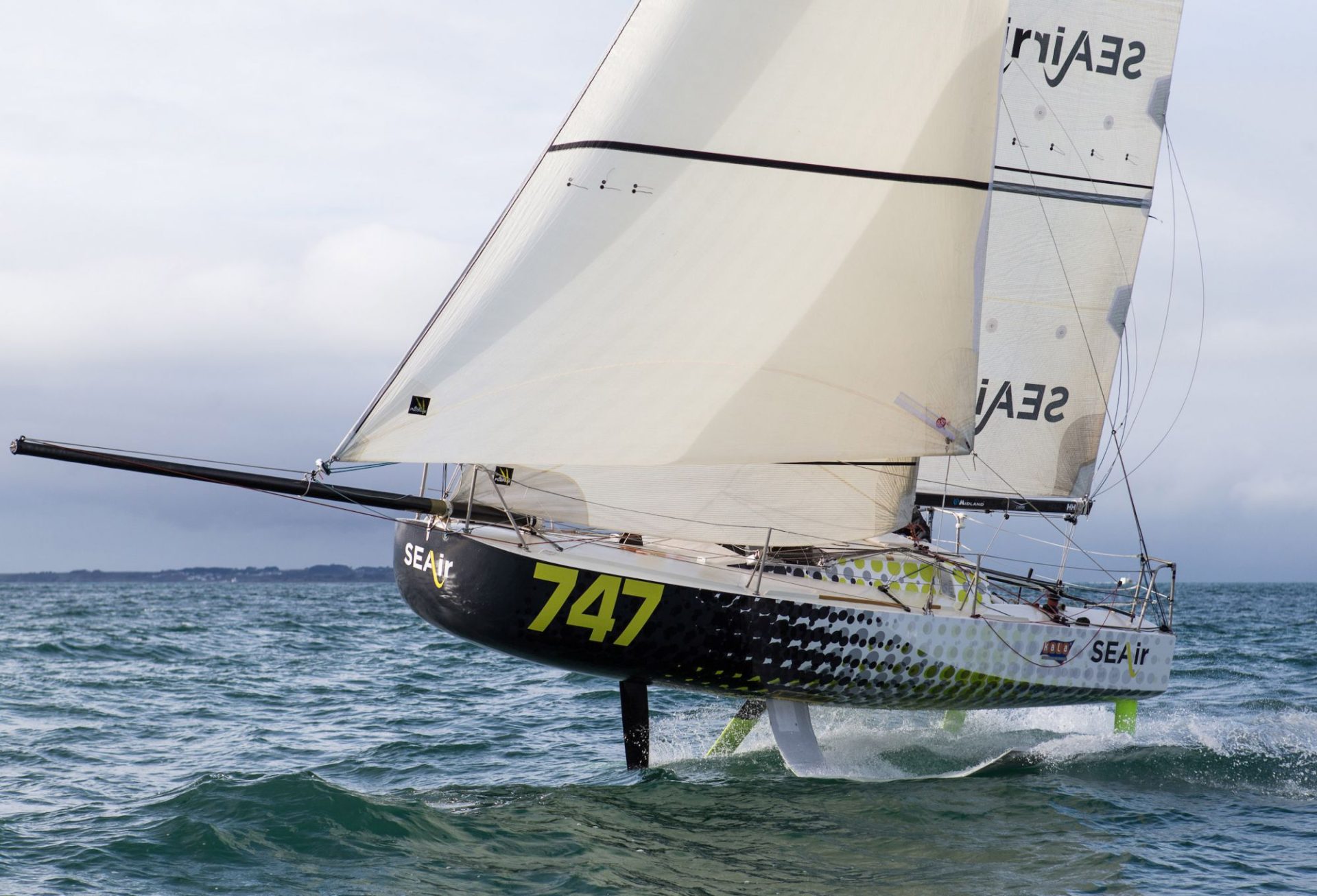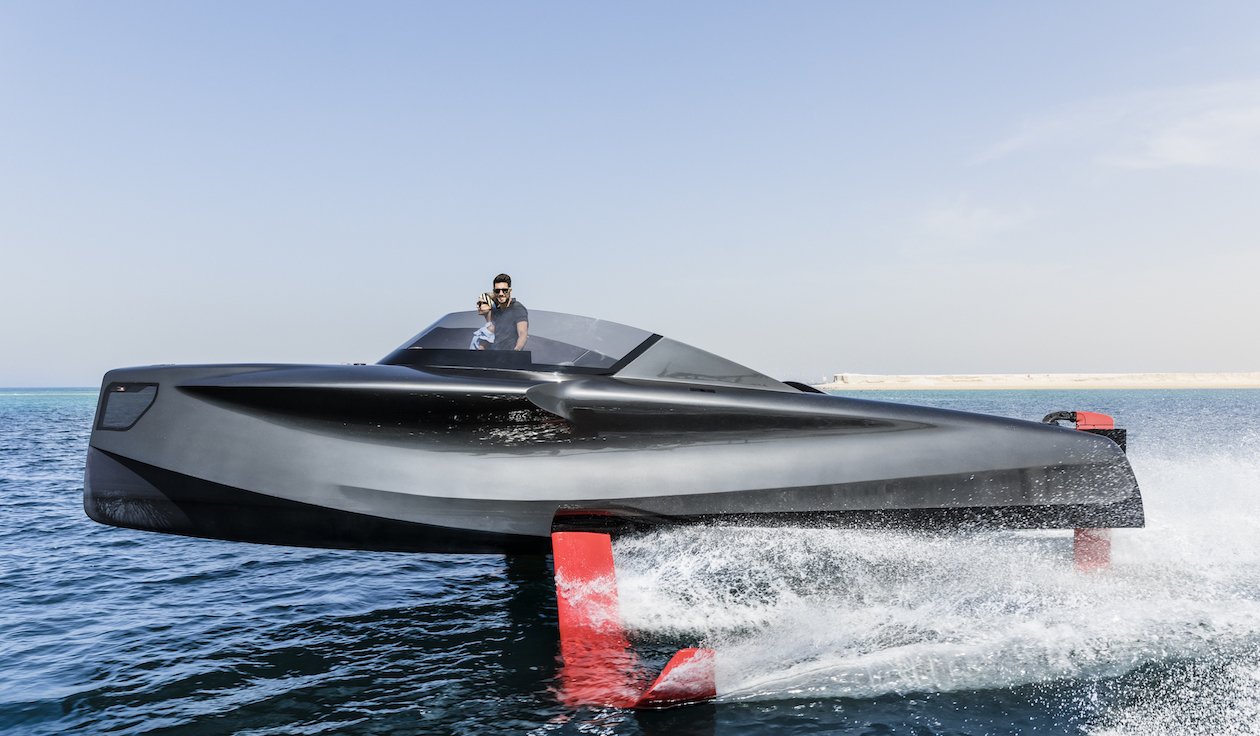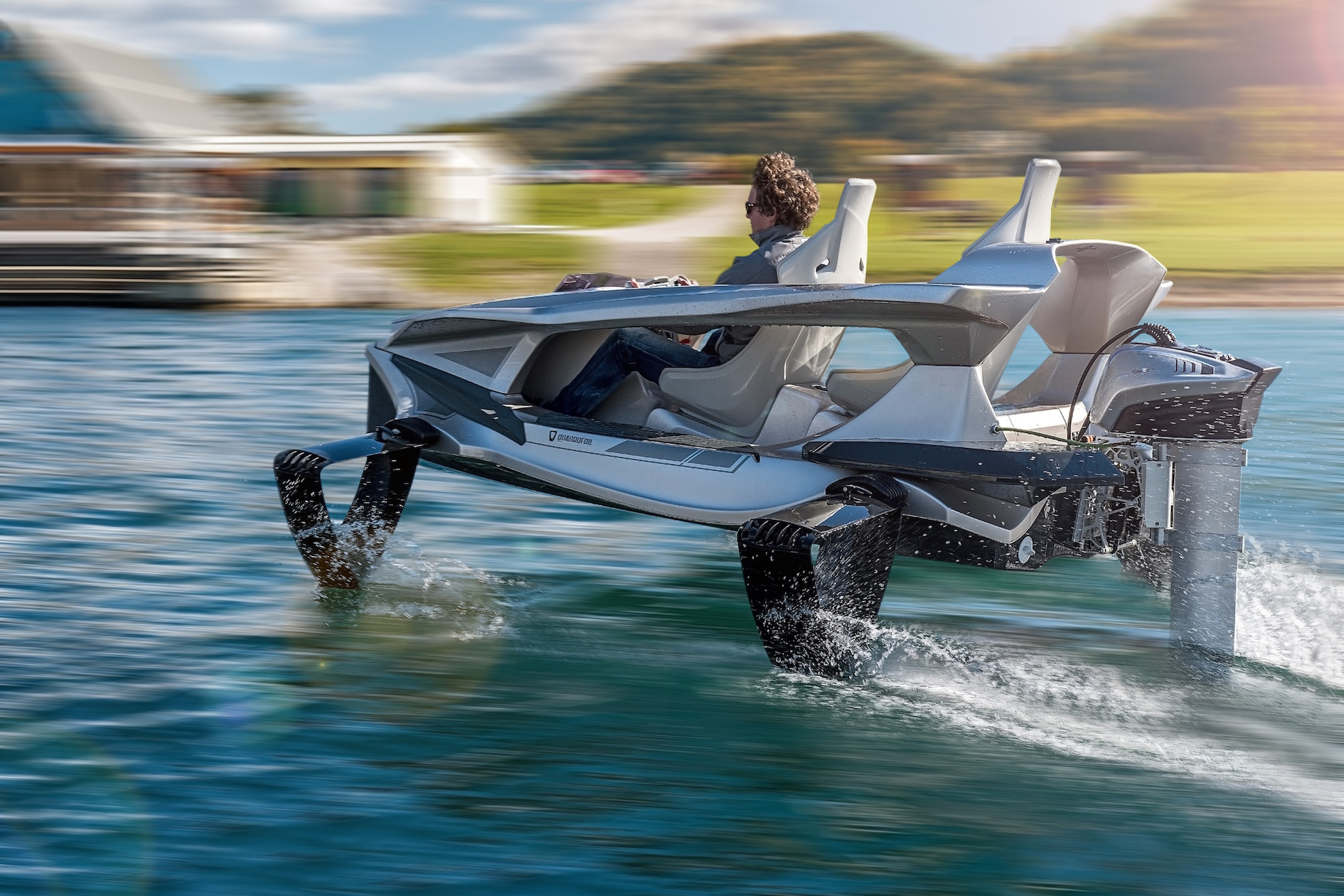Lift off
Despite what you may think, foils aren’t new technology. Dave Marsh explains why they’re suddenly so popular.
Written by Dave Marsh
13 November 2018
All of a sudden, the world seems to be teeming with foiling powerboats. Designer Tony Castro and Galeon are developing their first foil-assisted motorboat. Princess’ prototype R35 premiered at the Cannes Yachting Festival. And Dynamiq recently unveiled plans for its 50-metre GTT165, which sports a foil-assisted fast-displacement hull. Other foilers are up and running in every sense; Enata and Quadrofoil both have dramatic-looking craft which you can buy today. And we recently travelled to Paris, where we soared up and down the Seine on SEAir’s foiling 5.5-metre Zodiac.
Although the America’s Cup catamarans thrust foiling sailboats firmly into the limelight in 2013, it would be easy to suppose that foiling motorboats are new phenomena. Not so. At the end of the 19th century, Enrico Forlanini, a brilliant Italian polymath inventor, started experimenting with hydrofoils. If you type his name into Wikipedia, you will find a grainy picture from around 1908 of him flying along above the surface of Lake Maggiore in his motorised hydrofoil at about 37 knots.
Later on in the 20th century, far larger foil-borne passenger vessels made an appearance, particularly in Greek and Soviet waters. And in the 1970s and 1980s, Boeing Marine Systems developed and built a series of 40-metre-long, 250-tonne warships which could operate at 48 knots in three-metre seas, courtesy of their control systems, which actively regulated the ride height. Proof that foil-borne powerboats don’t need to be the size of Quadrofoil’s diddy 335-kilogram, 3.5-metre-long personal watercraft to work effectively.
These commercial and military boats came into being because of the potential advantages offered by foils, which are fairly straightforward. Foils still generate various kinds of hydrodynamic drag, including four types that a conventional hull form experiences: induced drag, form drag, skin friction, and spray-making. However, along with a decrease in skin friction, the potential reduction or even near elimination of wave-making resistance invariably leads to an overall reduction in drag. So foil-borne or foil-assisted boats potentially can be faster, more economical, or more modestly powered than their otherwise-identical counterparts.
That triumvirate of interrelated benefits is only the start. Depending on how high a foil-borne boat flies, there is the potential to reduce or even largely eliminate the annoying banging and crashing that even the biggest and best-designed planing boats experience in choppy conditions. Neighbourly types and environmentalists alike will appreciate the benefits of an immensely reduced wake, especially when passing smaller boats at close quarters and navigating waterways with fragile banks. In the same way that, say, Humphree’s high-speed interceptor system utilises inputs from various motion sensors to provide an Active Ride Control function, computer-controlled foil systems also have the potential to actively control many of the boat’s motions. Certainly, these include pitch, roll, and yaw, and possibly even aspects of heave, surge, and sway with a sufficiently sophisticated system. Ergo, the prospect of a magic carpet ride, the dream of most owners of fast planing powerboats.
Why now?
Given how profound the potential advantages seem to be, what took the powerboat world so long to get in on the act? And why now? Conservatism and cost suggest the answers to the first question. The leisure-boat industry is understandably conservative; why take the risk of developing something revolutionary if it’s not absolutely essential to do so? Also, simply developing a conventional powerboat already consumes copious amounts of time and money, long before you factor in the unknown development costs of a foiling system.
When it comes to ”why now,” the 2013 America’s Cup was almost certainly the pivotal moment.
This dramatic and heavily televised event spawned an outpouring of interest in foiling craft. It also precipitated a surge in research and development into foils, with a consequent leap in the boating world’s collective institutional knowledge. The computer programmes essential to successful foil design such as Computational Fluid Dynamics (CFD) has been around for a long time, but the more real-world data that is fed into them, the more accurate and predictable they become. It’s no coincidence that the team working with Princess to develop the active foil system for its R35 is BAR Technologies, the organisation behind Ben Ainslie’s America’s Cup challenge. Likewise, French company Hydros undoubtedly drew on its knowledge as a consultant for Luna Rossa’s challenge for the America’s Cup to design a small prototype hybrid motorboat with retractable foils. When Hydros joined the UAE-based Enata group in 2016, Enata used that prototype to further develop its 10-metre-long, 40-knot diesel-electric foiler.
The final piece of the puzzle is technology. The old Greek and Soviet passenger vessels utilised comparatively heavy aluminium foils. For various reasons, carbon has become the de facto material for foils. For example, aluminium is isotropic, meaning it has the same strength in every direction. The fibres in carbon fibre, however, can be oriented individually and therefore structurally fine-tuned to suit. Still, carbon fibre has been around for a long time, so what we have experienced is not a paradigm shift. However, slowly but surely, manufacturing carbon foils using CAD CAM (computer-aided design and computer-aided manufacture) has become a real-world proposition, not the preserve of America’s Cup budgets. For example, SEAir’s beautifully engineered foils weigh just 17 kilograms, and they’re manufactured with a five-axis robot that lays the carbon strands with textbook accuracy directly into a precision mould. With such precise control over the material, the designer can predict exactly how the foils will deflect under load. That’s particularly important if the foils are passive, i.e. not actively controlled.
Challenges ahead
Despite these advances, the designer of any foiling motorboat still faces significant challenges. The most pressing is how to get the power into the water. Sailing boats get an invaluable leg up because their powerplant, the rig, sits on top, isolated from the goings on below. However, fully foiling motorboats are trying to lift themselves – and unfortunately their propellers, too – out of the water. SEAir’s ingenious, simple solution is to attach the rear foil to the outboard, directly behind the propeller. However, even an extra-long shaft outboard is only so long, so larger fully foiling boats like Enata’s Foiler are likely to demand custom-designed solutions if they are to lift themselves sufficiently clear of the water. Conversely, foil-assisted boats like the GTT165 and Castro’s Galeon are designed to remain immersed in the water, so they have no propulsion issues.
Next question: What control system should you use? Although the SEAir Zodiac we tested had a fixed passive system (albeit one which could be manually fine-tuned before setting off), it actually highlighted the issues facing all systems. The biggest surprise was finding just how easy it was to get up and flying using a simple fixed system. On a sailing foiler, it’s often necessary to actively trim the foils as the speed increases and the boat’s trim changes. Not so on SEAir’s foiler, which climbed effortlessly onto its foils, with no intervention from me. Like Enata’s Foiler, trimming the aft foil (or foils) controls the overall boat trim, much as you would on a conventional outboard or stern-drive boat. Along with the self-levelling nature of the two widely spaced front foils, this did feel capable of providing the control that most people would need most of the time.
Heeling, or rather the lack of heeling, is an issue. Our prototype SEAir RIB cornered almost completely flat, even occasionally with a smidgen of outward lean, and extraordinarily quickly, too. YouTube video of Princess’ prototype R35 also shows it cornering rapidly with comparatively little lean. Boatbuilders will have to consider this seriously, because the inward lean of a conventional deep-V planing boat when she’s cornering hard actually makes her safer and more secure.
I think it will become incumbent on the designers and boatbuilders to ensure that fast foiling boats have suitably supportive seating, to stop the crew being thrown around under fierce cornering.
Of course, as with Humphree’s coordinated turn function, an active system has the potential to heel a foiling boat to provide a comfortable neutral-G turn.
Our SEAair trials additionally highlighted speed and fuel efficiency. With the aft foil’s trim set to +5 degrees, the Zodiac felt secure and stable and quite capable of driving serenely over the light chop and the ferry wakes on the Seine. However, temptingly, even a little extra positive trim markedly increased the boat’s speed and the fuel efficiency. But, the corollary was that the boat became more sensitive, and in this high-trim, high-efficiency mode, I personally found that it was easier get it wrong, catch an errant wave, and drop off the foils and fall back into what Enata magnificently refers to as ‘Archimedean’ mode. If speed and fuel efficiency are going to be big selling points as much as the promise of a bump-free ride in choppy conditions, that does again suggest an active system, which has the potential to continuously optimise the foil’s settings.
Fast forward
So what can we expect to appear in the years to follow? The disparate ways in which the current crop of foiling boats utilises foils suggests the sky’s the limit. However, the fundamental issue of how to transfer the motive power into the water when your motorboat is flying above the surface will not disappear, so that alone suggests the emergence of three principal types of foil-borne powerboats.
The first are likely to use ready-made power in the form of standard-issue electric or petrol outboards, perhaps single stern-drive legs, too. Assuming that we’re talking about fully foiling boats like SEAir’s tiny 5.5-metre Zodiac – not foil-assisted craft – that implies an upper limit on the size of craft, perhaps to around eight metres. I reckon this is the area that will really take off (ho ho ho) because there’s little doubt that on small boats, the foiling aspect – production and design – lends itself to outsourcing. In fact, SEAir has that very thing in mind, and Enata already sells an off-the-peg foil system for kite surfers. I predict that in no time, we’ll see dozens of small, funky, fast foilers, probably with simple passive (but retractable or hinged) foils hurtling around.
The second type is likely to be more exotic fare like Enata’s glorious Foiler. They’ll be craft offered by builders who are prepared to up the ante by designing and implementing custom forms of propulsion such as Enata’s elongated retractable torpedoes, or perhaps a waterjet system. Boeing’s warships used jets, in fact. This approach frees the designer from the boat-size limitations imposed by standard propulsion. There’s no doubt that the money-no-object nirvana would be a fully active system, but such systems will always add complexity and cost. Either way, I suspect these boats could become the Koenigsegg and Bugatti of the boating world, fast and furious and fearsomely expensive, but beautiful with it.
The third category is likely to comprise foil-assisted craft, which could be any size. Castro has incorporated a passive foil-assisted system on Galeon’s boat, whereas Princess and Dynamiq have opted for more complex active systems for their R35 and GTT165. How fast the leisure-boat industry takes up either form of assisted foiling will, I feel, depend on how fuel efficient the systems prove in practice and how they affect handling and the dynamic behaviour – all unproven aspects to date. Cost, weight, complexity, vulnerability, reliability, and warranty will all be considerations, too.
It’s worth reminding ourselves that we have been fitting active-foil systems to all manner of boats for considerable time. It’s just that we refer to them as fin stabilisers. Granted, currently they’re designed only to deal with roll. However, there’s no reason why fin stabilisers could not be fitted fore and aft in quad form, rather than as an amidships pair. Then it just would be a matter of developing the right control software to handle other boat motions, too, or even to lift the boat bodily to reduce drag. Hey, presto, a foil-assisted boat. Just remember, you heard it here first!



